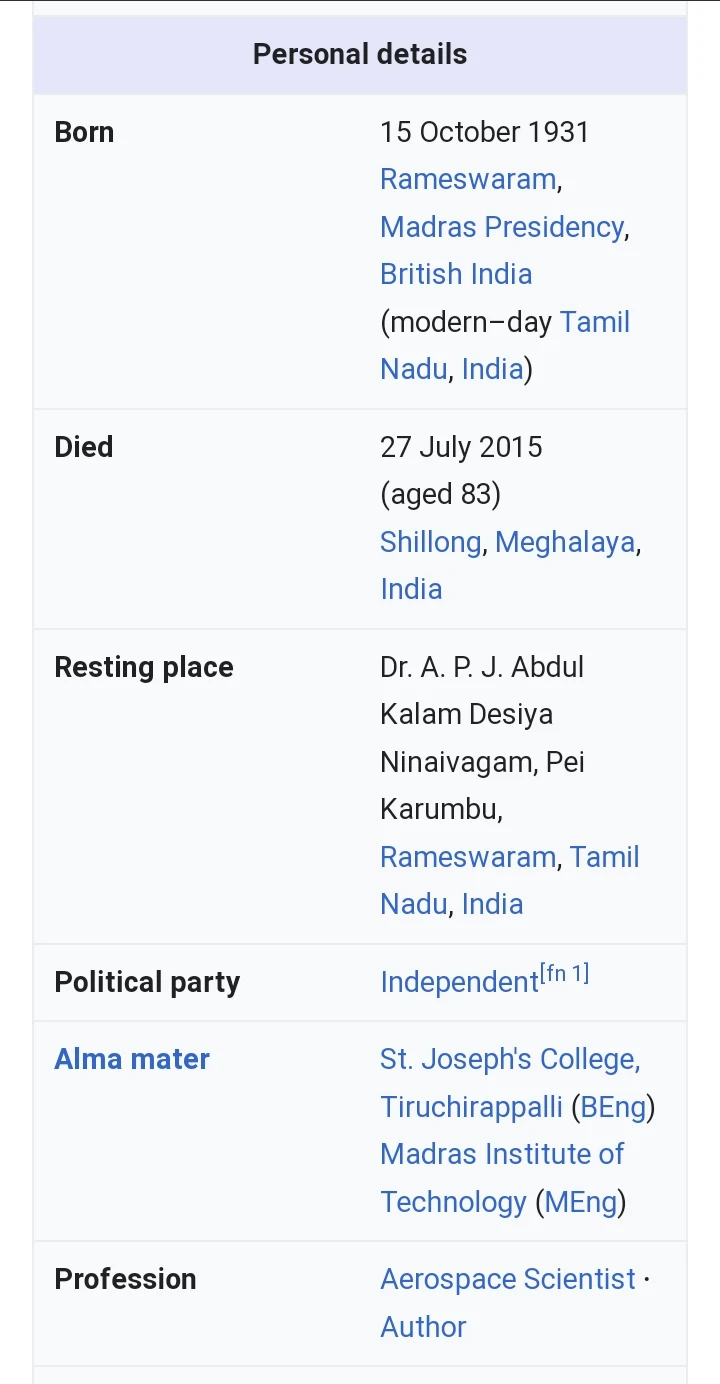Missile Man APJ Abdul Kalam Biography
APJ Abdul Kalam, also known as the "Missile Man of India," was a highly respected scientist, teacher, and the 11th President of India. Born on October 15, 1931, in Rameswaram, Tamil Nadu, Kalam rose from humble beginnings to become one of the most influential figures in Indian history. His immense contribution to space research and missile technology, along with his vision for India's development and education, left an indelible mark on the nation. Beyond his scientific achievements, Kalam was known for his humility, simplicity, and dedication to empowering the youth of India. This article delves into the life, work, and lasting legacy of APJ Abdul Kalam, exploring his remarkable journey and the impact he made on India and the world.
A.P.J. Abdul Kalam, in full Avul Pakir Jainulabdeen Abdul Kalam, (born October 15, 1931, Rameswaram, India—died July 27, 2015, Shillong), Indian scientist and politician who played a leading role in the development of India’s missile and nuclear weapons programs. He was president of India from 2002 to 2007.
Kalam earned a degree in aeronautical engineering from the Madras Institute of Technology and in 1958 joined the Defence Research and Development Organisation (DRDO). In 1969 he moved to the Indian Space Research Organisation, where he was project director of the SLV-III, the first satellite launch vehicle that was both designed and produced in India. Rejoining DRDO in 1982, Kalam planned the program that produced a number of successful missiles, which helped earn him the nickname “Missile Man.” Among those successes was Agni, India’s first intermediate-range ballistic missile, which incorporated aspects of the SLV-III and was launched in 1989.
Birth and Family Background
APJ Abdul Kalam, fondly known as the "Missile Man of India," was born on October 15, 1931, in a small village called Rameswaram in Tamil Nadu. Hailing from a modest background, his father Jainulabdeen was a boat owner and his mother Ashiamma was a housewife. Growing up in a close-knit family, Kalam imbibed values of simplicity and determination from his parents.
Childhood and Education
Kalam's childhood was filled with curiosity and a thirst for knowledge. His interest in science was evident from a young age, often dismantling and reassembling household gadgets just to understand their inner workings. Despite facing financial constraints, Kalam excelled in his studies and graduated with a degree in Physics from St. Joseph's College, Tiruchirappalli. His academic journey paved the way for his future accomplishments in the field of aerospace and defense.
Early Career and Contributions at DRDO
Kalam began his professional journey as a scientist at the Defense Research and Development Organization (DRDO) in 1958. His expertise and dedication were soon recognized, and he played a vital role in the development of India's first indigenous hovercraft. As a leading scientist, Kalam contributed significantly to the country's missile programs, including the development of the Agni and Prithvi missiles.
Leadership at ISRO
Kalam's brilliance led to his appointment as the Chief Executive of the Integrated Guided Missile Development Program (IGMDP) in the 1980s. Under his leadership, India achieved remarkable success in missile technology, making significant strides in the defense sector. His visionary leadership played a crucial role in establishing India as a formidable force in the field of aeronautics.
Notable Achievements and Projects
Kalam's illustrious career boasts numerous achievements, including his pivotal role in the designing and development of the Polar Satellite Launch Vehicle (PSLV), which has played a vital role in several successful space missions. Additionally, he was instrumental in the successful testing of India's nuclear capabilities as part of the Pokhran-II nuclear tests in 1998. Kalam's contributions to missile and space technology have left an indelible mark on India's defense and scientific landscape.
Election as the President of India
In 2002, Kalam assumed the esteemed office of the President of India, becoming the first scientist to hold this prestigious position. His presidency was characterized by his unwavering commitment to youth empowerment, education, and technological advancement.







No comments:
Post a Comment
If You Have any Doubts, let me Comment Here